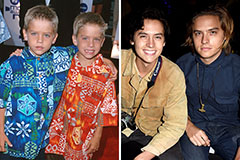
Embark on a captivating exploration of the medical realm where diagnoses defy conventional patterns. This journey delves into remarkable case studies, showcasing uncommon clinical manifestations that challenge medical professionals to analyze the complexities of human health.
Within these compelling narratives, we uncover striking stories of patients who present with peculiar signs, often leaving physicians stumped. Through meticulous investigations, we shed light on the underlying mechanisms of these mysterious cases.
- Be prepared to be amazed by the intricate interplay between biology and the human experience.
- Explore the world of medical mystery and understand how even the most perplexing cases can lead to advancements in medicine.
Unveiling Rare Diseases: Insights from Patient Narratives
Patient testimonies offer a powerful lens through which to understand the lived experience of rare diseases. Often overlooked in traditional research settings, these personal stories can shed light on the unique challenges faced by individuals and their families, illuminating gaps in current knowledge and highlighting areas for further research. By amplifying patient voices, we can foster a more empathetic approach to healthcare Endoscopic image and drive progress towards effective cures. The insights gleaned from patient narratives hold the potential to transform our understanding of rare diseases, empowering both patients and researchers alike.
Bridging this Gap Between Bench and Bedside: Case Reports in Action
Case reports hold a unique position within the medical landscape. They provide practical insights into individual experience, showcasing which clinical observations translate through theoretical knowledge gained in research settings. These in-depth accounts of specific patients reveal valuable clues that can guide future practice decisions. By highlighting the complexities of disease presentation and treatment outcomes, case reports function as a bridge between the bench and bedside, fostering synergy between researchers and clinicians alike.
They stimulate ongoing discussion and investigation, ultimately contributing to a deeper understanding of disease mechanisms and optimizing patient care.
Patient Presentations: Illuminating Diagnostic Dilemmas
Clinical vignettes offer invaluable opportunities to delve into the complexities of diagnosis. These concise narratives, often featuring real or hypothetical patient scenarios, challenge clinicians to analyze a myriad of signs. By integrating clinical findings with their understanding, physicians can refinec their diagnostic proficiency and navigate the intricate pathways to an accurate diagnosis.
- Clinical vignettes can be used to educate medical students and residents on common illnesses.
- They function as powerful tools for facilitating analysis among clinicians.
- Through the scrutiny of diverse clinical vignettes, healthcare providers can broaden their understanding of disease patterns.
Advancing Medical Knowledge Through Real-World Cases
The Journal of Clinical and Medical Case Reports (JCMCR) serves as a vital platform for sharing and disseminating real-world medical scenarios. By presenting compelling patient narratives, JCMCR encourages collaborative learning and the development of medical knowledge. Clinicians, researchers, and trainees from numerous backgrounds gain invaluable insights from these detailed case reports, improving their understanding of challenging medical presentations. JCMCR's dedication to publishing real-life cases fosters a culture of shared learning and contributes to the continuous evolution of healthcare practices.
Magazine: A Platform for Novel Clinical Observations
The JCMCRI Magazine serves as a essential resource for disseminating novel clinical discoveries. Clinicians from diverse fields contribute valuable insights, fostering a dynamic environment for the advancement of medical knowledge. The journal's commitment to peer review provides the rigor necessary for trustworthy clinical information. Through publishing cutting-edge studies, the JCMCRI Journal contributes our comprehension of complex clinical cases, ultimately improving patient care.
The Power of Narrative Medicine: Case Reports as Educational Tools
Narrative medicine has risen in prominence as a vital approach within the medical discipline. Its essence lies in recognizing the invaluable role of patient stories in shaping both medical practice and comprehension. Case reports, specifically, serve as potent mediums for transmitting these narratives, enriching educational experiences for future physicians. Through the meticulous documentation of individual patient journeys, case reports showcase the complexities of human experience, fostering empathy and critical reflection in learners.
- Additionally, case reports provide a platform for exploring the intersection of medical science and the social sciences. By examining patient narratives alongside clinical data, learners can develop a more holistic outlook on healthcare.
- Ultimately, case reports act as stepping stones for developing the essential skills of narrative medicine: empathy, communication, and thoughtful patient-centered care.
Consequently, integrating case reports into medical education curricula is an powerful strategy for preparing future physicians to address the complexities of modern healthcare with both clinical expertise and humanistic comprehension.
Case Report Writing: Mastering the Art of Concise Communication
Effective communication is paramount in the medical field, and case reports serve as a vital tool for disseminating knowledge and advancing clinical practice. Crafting compelling case reports, however, requires precision and clarity. This article delves into the nuances of case report writing, providing insights on structuring your narrative, choosing appropriate language, and ensuring conciseness.
A well-structured case report follows a logical progression, starting with a captivating introduction that presents the patient's situation. Next, delve into the patient's clinical background, providing relevant details about their afflictions. The diagnostic process should be meticulously described, outlining the methods employed and the findings obtained. Thereafter, detail the intervention plan implemented, emphasizing its rationale and any adjustments made throughout the course of care.
The results section should concisely summarize the patient's response to treatment, incorporating any improvements observed. Finally, synthesize your findings, offering insights into the case and its implications for clinical practice.
Remember, a successful case report is educational, providing valuable understandings to the medical community. By mastering the art of concise communication, you can effectively share your experiences and contribute to the advancement of medical science.
Exploring the Spectrum in Human Disease: A Case-Based Approach
Embark on a captivating journey through the intricate world of human ailments with our comprehensive case-based approach. This immersive learning experience unveils the multifaceted nature of disease, delving into its diverse manifestations and underlying mechanisms. By analyzing real-world cases, you will gain a profound understanding of the complex interplay between genetic predispositions, environmental factors, and lifestyle choices that contribute to onset of various conditions. From acute infections to chronic ailments, our case studies illuminate the diagnostic challenges, therapeutic interventions, and long-term implications associated with each ailment.
- Case Studies: Dive into detailed accounts of patients experiencing a wide range of diseases, providing valuable insights into their clinical presentations, diagnostic journeys, and treatment outcomes.
- Interdisciplinary Perspective: Explore the diverse perspectives held by various healthcare professionals involved in disease management, including physicians, nurses, pathologists, and researchers.
- Critical Thinking Skills: Develop your ability to analyze complex medical information, formulate hypotheses, and make evidence-based conclusions based on the presented case studies.
This case-based approach not only enhances your theoretical knowledge but also cultivates essential critical thinking skills that are crucial for future success in the medical field.
From Observation to Insight: The Value of Detailed Medical Case Histories
In the intricate tapestry of healthcare, a detailed medical case history serves as an invaluable thread, weaving together the patient's account and illuminating the path towards accurate diagnosis and effective treatment. Far from merely documenting symptoms, a comprehensive case history delves into the patient's daily routines, pre-existing, and family. This rich tapestry of information allows healthcare professionals to understand the complexity of each individual's health journey, moving beyond surface-level observations to gain insights.
- A meticulously crafted case history can highlight potential risk factors, shed light on patterns in health concerns, and provide crucial context for interpreting laboratory results and medical imaging.
- Moreover, a thorough understanding of the patient's emotional state can foster a more compassionate doctor-patient relationship, enhancing communication and trust.
In essence, a detailed medical case history is not just a file but a powerful tool that guides healthcare professionals to provide more personalized, effective, and patient-centered care.
Magazine JCMCR Transforming Healthcare through Patient Insights
At the JCMCR Magazine, we believe that patients are crucial drivers of medical progress. Our mission is to amplify the narratives of individuals living with health challenges, transforming their experiences into powerful catalysts for researchers, clinicians, and policymakers. Through compelling articles, we aim to bridge the gap between patient voices and medical advancements.
- We welcome patients, families, clinicians to participate in our ongoing journey.
 Jennifer Grey Then & Now!
Jennifer Grey Then & Now! Rick Moranis Then & Now!
Rick Moranis Then & Now! Dylan and Cole Sprouse Then & Now!
Dylan and Cole Sprouse Then & Now! Shannon Elizabeth Then & Now!
Shannon Elizabeth Then & Now! Megyn Kelly Then & Now!
Megyn Kelly Then & Now!